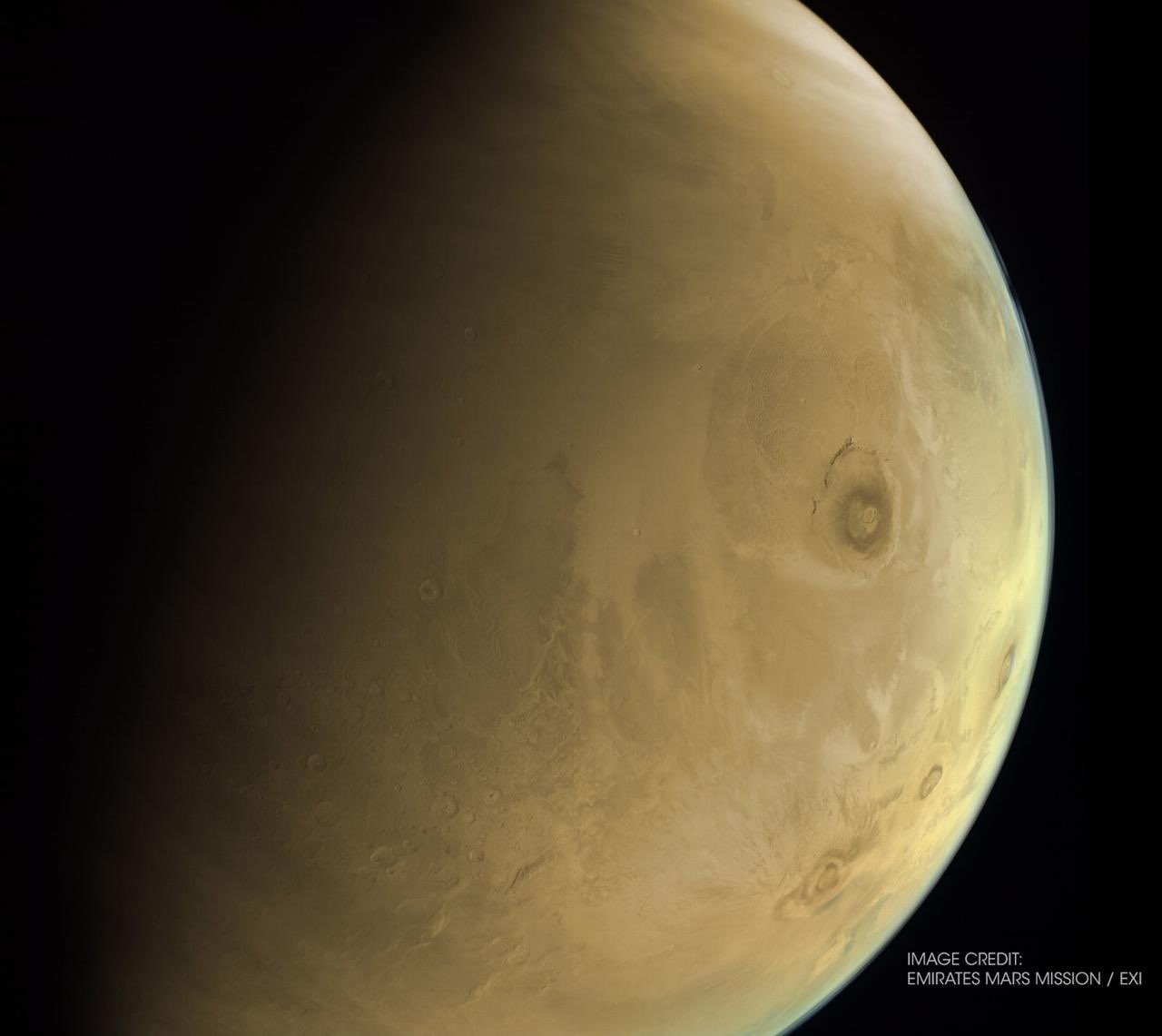UAE's Hope spacecraft at Mars spies solar system's tallest volcano (photo)

The United Arab Emirates' (UAE) first-ever Mars spacecraft captured its most stunning image yet of the Red Planet as the probe continues preparing to begin its science observations in earnest.
The spacecraft, dubbed Hope, entered orbit around Mars on Feb. 9, marking the end of a seven-month trek from Earth and promising tantalizing science results to come about the Red Planet's weather and atmosphere. But before Hope can begin that science work, it needs to adjust its orbit with two carefully choreographed moves, both of which will occur in the next few weeks.
In the meantime, the spacecraft has been testing its three instruments, including the 12-megapixel camera called the Emirates Exploration Imager, or EXI. That camera snapped a stunning image of the largest volcano in the solar system, Olympus Mons, on Feb. 26. At the time, the spacecraft was about 8,000 miles (13,000 kilometers) above the planet's surface, mission team members said.
Related: The United Arab Emirates' Hope mission to Mars in photos
EXI takes photographs in triplets, each focused on red, green or blue light. Then, scientists combine the images for a more human-friendly picture.
The UAE has also released initial data from the other two instruments on Hope: the Emirates Mars Infrared Spectrometer (EMIRS), which measures how heat flows between the surface of the planet and its atmosphere, and the Emirates Ultraviolet Spectrometer (EMUS), which measures the abundance of compounds like hydrogen, oxygen and carbon monoxide in the upper atmosphere.
The Emirates eXplorer Imager (EXI) captured this view of Olympus Mons, the tallest volcano in the solar system, from an altitude of 13,007 km. The color is created from a composite of the red, green and blue EXI images.#HopeProbe pic.twitter.com/yCSBKqAVnZMarch 10, 2021
By combining data from all three instruments over the course of a full Martian year (687 Earth days), the Hope team will sharpen scientists' understanding of how the different layers of the Martian atmosphere interact throughout a day and as seasons change.
Get the Space.com Newsletter
Breaking space news, the latest updates on rocket launches, skywatching events and more!
Those science observations will begin in earnest later this spring. Before then, the spacecraft must complete a final pair of course corrections that will take it from a temporary orbit into its final orbit, which loops the planet every 55 hours. Those maneuvers are scheduled for March 22 and April 6, according to the UAE Space Agency.
Email Meghan Bartels at mbartels@space.com or follow her on Twitter @meghanbartels. Follow us on Twitter @Spacedotcom and on Facebook.
Join our Space Forums to keep talking space on the latest missions, night sky and more! And if you have a news tip, correction or comment, let us know at: community@space.com.

Meghan is a senior writer at Space.com and has more than five years' experience as a science journalist based in New York City. She joined Space.com in July 2018, with previous writing published in outlets including Newsweek and Audubon. Meghan earned an MA in science journalism from New York University and a BA in classics from Georgetown University, and in her free time she enjoys reading and visiting museums. Follow her on Twitter at @meghanbartels.









